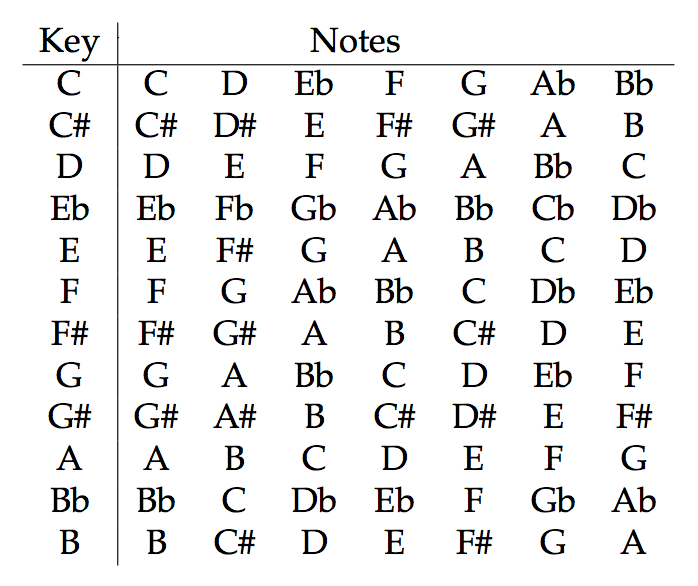Building and Playing the Minor Scale on Guitar
While the major scale is the basis of all music theory, the minor scale is the most used in rock music
Building the Minor Scale
The minor scale is defined by the formula W-H-W-W-H-W-W, where “W” stands for “whole tone” (equal to 2 frets on the guitar) and “H” for “half tone” (equal to 1 fret on the guitar). Here is a step-by-step explanation on how to use this formula
- Choose a root note (we will choose an E) and write it down. This note will give the name to the scale (“E minor”).
- The first letter in our formula is a “W”, which means you have to take the note 2 frets higher than E, that is an F# and write it down
- The second letter in our formula is a “H”, so take the note 1 fret higher than F#, that is an G, and write it down.
- The third letter on the formula is “W”, so now you have to take the note that is 2 frets higher than G, that is A, and write it down.
- You proceed the same way with all the other letters. If you did everything correctly you will find that the E minor scale is E F# G A B C D
Of course, you should work out the same procedure for all keys as an exercise. This is what you will find:

Major vs Minor Scale
If we compare a C major scale (C D E F G A B) with a C minor scale (C D Eb F G Ab Bb) we notice that the minor scale has the 3rd, 6th, and 7th note lowered by one fret respect to the major scale. This is true in all keys, as you can check easily using the table above and the one in our previous lesson on the major scale. One alternative formula for the minor scale (the first being the W-H-W-W-H-W-W we have seen above) is thus 1 2 b3 4 5 b6 b7; this formula mean: “Take a major scale (1 2 3 4 5 6 7) and lower the 3rd, 6th, and 7th note by one fret”.
Let’s see now how to play the minor scale on the guitar. We will use the A minor scale (A B C D E F G), but you can apply all the following patterns to any other key just by moving them up or down on the fretboard.
Traditional Fingering
Based on the idea that each finger controls one fret (the index finger actually controls two frets). Numbers above the note indicate the finger to use (1=index, 2=middle, 3=ring, 4=pinky).

3-notes-per string Fingering
A more regular pattern that is the favorite of many rock/metal players since it is easier to speed up than the previous pattern. This is the pattern of choice when you want to play a faster lick.

Sliding up the Neck
A pattern that repeats itself every two strings, and so it is easier to remember and to use in improvisation. Here we are spanning three full octaves on the guitar.


Today we have seen how the minor scale is built and some different ways of playing it on the guitar. There are many more scales for guitar of course, and each of them is used to express different emotions.